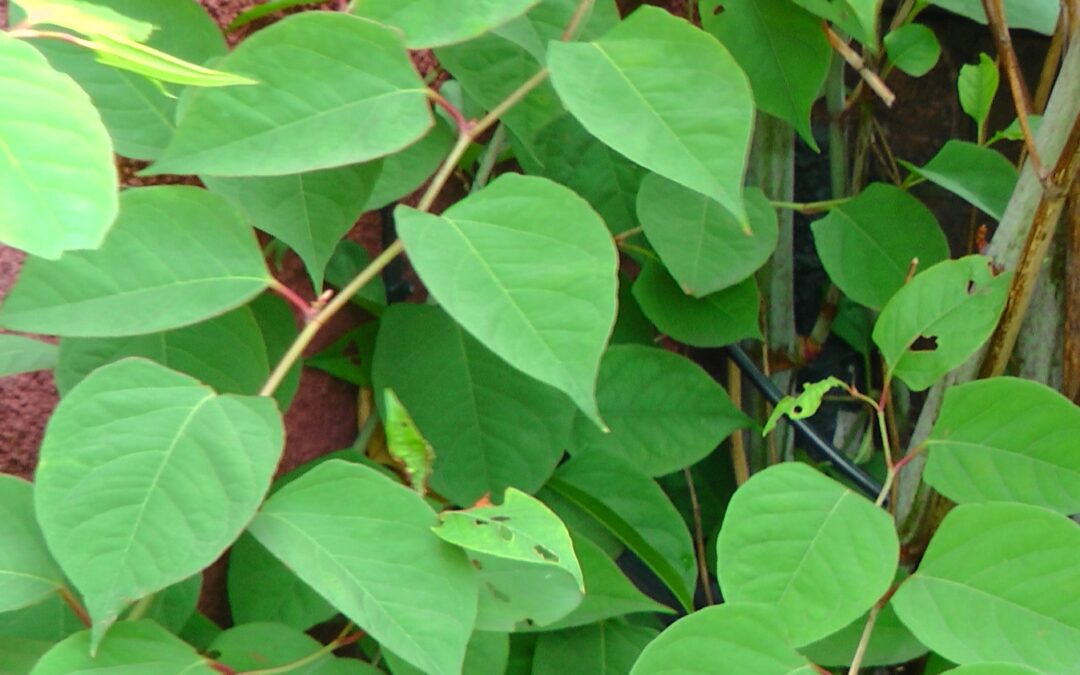What is the 7 Metre rule for Japanese knotweed?
What is the 7 Metre rule for Japanese knotweed? Find out about the change to the 7-meter rule for Japanese knotweed. (Fallopia japonica). It refers to the distance the plant’s underground rhizomes (stems) can extend from the visible growth. The rhizomes can extend up to 7 meters horizontally from the main stem and occasionally grow to 2 to 3 meters deep. This means the plant can spread underground up to 7 meters from the visible growth. This makes it challenging to eradicate.
Professionals have previously used this 7-meter rule to determine the extent of the infestation and the area needing treatment. It’s important to note that the 7-meter rule for Japanese knotweed was a general guideline. It would vary depending on the specific conditions of the site.
The new 3-meter rule
The 7-meter rule has not been superseded by the 3-meter rule regarding Japanese knotweed. Moreover, it refers to the legal requirement in the UK for property owners to control the spread of the plant within a 3-meter radius of their property boundary. This is based on the assumption that Japanese knotweed roots only typically extend up to 3 meters from the visible plant. Controlling the plant within this zone can prevent it from spreading further onto neighbouring properties. It’s worth noting that failure to comply with this regulation can result in legal action and potential financial penalties. It is essential for property owners to correctly identify and manage Japanese knotweed on their land to prevent its spread and protect the local environment.
Japanese Knotweed Management categories (Table 1) are below.
|
A
|
Management Category
Suppose knotweed is present on the property and has caused visible damage to a structure. In that case, it is recommended that a specialist report is obtained and a suitable remedial plan is agreed upon before applying for a mortgage. However, if you are not seeking a mortgage, it is advisable to consult a specialist remediation contractor for advice on appropriate action. |
|
B |
Management Category
Suppose knotweed is present on the property and is not causing material damage to a structure but is likely to prevent the use of or restrict access to amenity space. In that case, it is recommended that a specialist report be obtained and a suitable remedial plan agreed upon before applying for a mortgage. However, if you are not seeking a mortgage, it is advisable to consult a specialist remediation contractor for advice on appropriate action. |
|
C |
Management Category
Suppose knotweed is present on the property, and it is not causing any material damage to a structure or affecting access to or use of amenity space. In that case, there is no need for mortgage retention. However, if you are not seeking a mortgage, it is advisable to consult a specialist remediation contractor for advice on appropriate management. |
|
D |
Management Category
If knotweed is present off-site within 3m of the subject property boundary, it is recommended that there should be no mortgage retention except in exceptional circumstances. However, if you are not seeking a mortgage, it is advisable to consult a specialist remediation contractor to advise on possible encroachment and appropriate management. |
You can get into serious trouble.
If you knowingly let Japanese knotweed spread from your garden to your neighbour’s property. You could be held liable for the damage caused and may face legal action. In the UK, for example, Japanese knotweed is classified as a “controlled waste” under the Environmental Protection Act 1990. Moreover, it is an offense to cause or allow the plant to spread to the wild or neighbouring properties. If a neighbour can prove that the Japanese knotweed originated from your property, you may be liable for the cost of removing the plant and any damage caused by its growth. Such as damage to foundations, walls, and drains. Failure to take action to control the spread of Japanese knotweed can also result in legal action by local authorities or other organizations responsible for environmental protection.
It’s important to remember that Japanese Knotweed is an invasive species. It requires professional treatment and management to prevent further spread and damage.
